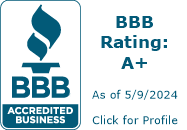Solar panels are an increasingly popular form of alternative energy in Colorado. They provide home owners with more control over their energy production and consumption while promoting sustainable resources for the environment. While technology in the solar energy field is constantly advancing, it is helpful to know what actually makes up a solar energy panel in order to understand how it creates green energy. As the leading solar resource in Colorado Springs, we believe in the importance of educating our community about the benefits of going solar,as well as the details of how solar works. Understanding your investment is vital in order to make well-informed decisions that you can be confident about.

What Makes Solar Panels Work?
Solar panels are typically made with three core components: silicone, glass, and metal. The primary energy conductors for solar panels are silicon cells. Silicone is nonmetal element that contains properties which allow it to convert sunlight into energy. However, silicone cannot act alone. They are paired with metal casing and wiring which allow the energy that forms to flow into your home and provide valuable energy.
What Are The Parts of a Solar Panel?
- Silicone Solar Cell
The earth’s crust is made up of 25% silicone, which makes this semiconductor a cost effective ingredient for the overall success of a solar panel.
- Glass Sheet
This protective sheet is for casing and allows the light from the sun to pass through to the contact grid.
- Front Contact Grid
This grid is directly beneath the glass casing and it allows for sunlight energy to move down to the positive silicon layer.
- Metal Frame with Coating
A solar panel’s metal frame typically features an anti-reflective coating designed to reduce the amount of sunlight lost to glare.
- Dual Silicone Layers
Solar panels consist of both a positive silicone layer and a negative silicone layer. Between the two is a junction where the movements of both positive and negative electrons combine to form an electric field.
- Back Contact Grid
This component is connected to the front contact grid via an external circuit. This connection allows the flow of energy to move from the sunlight into the home or business as needed.
What Happens to the Energy Solar Panels Produce?
Together, the individual parts of a solar panel work together to create a very powerful form of alternative energy. The solar panel conducts the energy which is then transferred to an inverter, switchboard, and electricity meter. The meter determines how much of the energy your solar panel produced is needed to fuel your home. Any excess energy is directed to the utility grid. Through a utility billing process called net metering, you will only pay for the energy that your home uses.
CRJ Contractors | Colorado’s Solar Experts
As experts in the field, we believe in providing appropriate, understandable information to help home and business owners understand how solar energy can benefit their lives. From lowering your utility bills to decreasing your carbon footprint, there are countless benefits to investing in commercial solar or residential solar. Understanding the parts that make up a solar panel is just a snapshot of the solar energy industry. If you have any questions about how solar can work for you, then contact us today!





